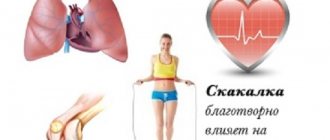Degrees of mastoptosis
Ptosis (mastoptosis) of the mammary glands is sagging of the breasts due to loss of elasticity and firmness, as well as a number of other reasons.
First of all, this is an aesthetic problem, which sometimes becomes psychological, as the woman begins to feel embarrassed about her body. This defect often occurs in girls. There are several degrees of mastoptosis. Normally, the nipple is located 5-7 cm above the inframammary fold located under the breast. Depending on the prolapse of the nipple, there are 3 degrees of ptosis:
- I - the nipple is lowered to the level of the pectoral fold, the sagging is unnoticeable;
- II - the nipple is located below the inframammary fold, ptosis is noticeable;
- III - the nipple is directed downwards, the sagging of the breast from the inframammary fold is more than 5 cm, pronounced.
In addition to the described degrees, pseudoptosis is also distinguished, in which the mammary glands sag, but the nipple is located above the fold. This type is typical for those with large breasts.
The presence of sagging is quite simple to determine: you need to place a pencil under the chest. If the mammary gland is of normal shape, the pencil falls off. If it persists, then we can talk about mastoptosis. To determine the degree of sagging, a measuring tape is needed to measure the distance from the nipple to the breast fold.
Dissatisfaction with the shape of women's breasts often becomes the cause of complexes and sometimes depression. Correction helps increase self-esteem and self-confidence, makes you feel attractive and young.
The main causes of ptosis
There are many reasons why the mammary gland prolapses:
- hereditary factor;
- breast-feeding;
- age-related changes;
- fluctuations in body weight;
- changes in hormonal levels;
- macromastia and gigantomastia;
- smoking.
Let's look at each reason in more detail.
Breast-feeding
During pregnancy, the body prepares for childbirth and subsequent feeding of the child. Under the influence of hormones, the glands increase in size; when breastfeeding, they are filled with milk and increase in volume. After lactation, iron decreases, but stretched skin and ligaments can no longer return to their previous shape. The larger the breasts, and the longer the lactation period lasts, the more the mammary glands stretch.
Hereditary factor
The shape of a girl's breasts is largely determined by the elasticity of the skin and ligaments. This feature is determined by genetics, which is confirmed by many years of observation through family ties.
Age-related changes
Loss of elasticity in the skin and ligaments occurs with age. The body's production of collagen and elastin decreases, and the dermal framework becomes loose. The skin loses its elasticity and ability to support the weight of the glands. This primarily applies to large breasts.
Fluctuation in body weight
Breasts may sag if you gain excess weight. This happens because some of the fatty tissue is deposited in the breasts, its weight increases, and the skin stretches. Breasts can also sag after losing weight, when the fat layer decreases and excess skin forms, which causes ptosis.
Changes in hormonal levels
The glands enlarge even with minor hormonal changes, for example, before menstruation, but the breasts do not sag. Everything can change when serious hormonal disruptions occur in the body due to various endocrine diseases, which increase the risk of mastoptosis.
Gigantomastia
Large mammary glands have significant weight. The ligaments cannot constantly support such breasts; they lose elasticity and stretch over time.
Smoking
This habit, harmful to the body, increases the likelihood of mastoptosis, since nicotine inhibits the synthesis of elastin. The skin loses its elasticity and sags.
Prevention of ptosis
The appearance of mastoptosis can be prevented. There are several measures to prevent breast sagging:
- Properly selected underwear is a good preventive measure against breast cancer. .
- Play sports. Well-developed muscles of the back and chest support the mammary glands well, so choose those sports that develop these muscle groups well, for example, gymnastics and swimming.
- Take care of your breast skin using cosmetics that stimulate the synthesis of elastin and collagen.
- Watch your weight. Avoid sudden weight gain and loss.
- Take a contrast shower to stimulate blood supply to the skin.
If breast ptosis does occur, mastopexy will help restore the previous shape.
Torsoplasty
The most extensive plastic surgery is torsoplasty. It includes a circular lift of the entire body (back, abdomen, lower back, thighs and buttocks). This intervention is carried out when losing 30 kg or more of weight. In this case, the skin, which has lost its fat base, cannot contract on its own and forms folds. With obesity, diastasis of the rectus abdominis muscles usually develops, which becomes especially noticeable after losing weight.
Operation technique
Depending on the qualifications of the surgeons and the availability of equipment at the clinic, torsoplasty (body lifting) can be performed in several stages or simultaneously. In the latter case, incisions and skin tightening are first made in the lumbar and lateral areas. The patient is then turned onto his back and a full abdominoplasty is performed. If necessary, tighten the skin in the thighs, shoulders and buttocks.
This volume intervention lasts from 4 to 6 hours, depending on the techniques used and the complexity of the procedure.
Recovery period
Observation in the hospital after surgery continues for 2 to 5 days. This depends on the general condition of the patient and the characteristics of the intervention performed. Doctors assess the condition of the discharge through drainages and perform dressings. The patient is prescribed adequate pain relief and antibiotics.
After discharge, the patient receives lifestyle recommendations. In general, they are no different from those given after abdominoplasty. However, due to the large volume of the operation, the rehabilitation period lasts longer, and its duration is determined by the doctor individually.
Contraindications
The list of contraindications for torsoplasty is the same as for abdominoplasty. Surgery after weight loss is contraindicated in patients with the following concomitant diseases:
- diabetes;
- pathology of the lungs or heart, accompanied by respiratory or heart failure;
- blood diseases with increased bleeding;
- oncological pathology;
- tuberculosis and other chronic infections, as well as immunodeficiency conditions.
Effects
The external result after the operation is noticeable immediately. Skin folds disappear, the body becomes toned, and the abdominal muscles become stronger. These changes last for a long time. The patient should avoid sudden weight gain and loss of 30 kg or more, as this will neutralize the effect of the intervention.
Preparing for surgery
The preparatory period for surgical intervention includes consultation with a plastic surgeon, mammologist, examination, examination, and tests.
Surgeon consultation
At the appointment, the plastic surgeon collects anamnesis, clarifies genetic factors, previous diseases, and allergies to medications.
During the examination, the doctor determines the size of the gland, the degree of ptosis, the ratio of adipose and glandular tissue, structural features of the breast, and the presence of stretch marks. Depending on the degree of mastoptosis, an intervention technique is selected and an operation plan is drawn up. The surgeon clarifies whether the patient plans to lose weight and advises doing so before surgery. In addition to the surgeon, you will need to consult a therapist, and additionally, if there are concomitant diseases, other specialists.
Analyzes
Before surgery, you must have the following tests:
- general blood analysis;
- Rh factor and group;
- coagulogram;
- blood biochemistry;
- blood for HIV (f. 50);
- blood for glucose;
- for hepatitis B (HbsAg) and C (HCV), for syphilis (RW);
- general urine analysis.
Examination and diagnosis
The doctor orders a breast examination. Up to 35 years of age, it includes one ultrasound or MRI procedure, and after 35, a mammogram and two ultrasound examinations are required. Patients with chronic diseases and over 40 are prescribed additional tests.
It is mandatory to do a FLG or chest x-ray, an electrocardiogram with a conclusion. A consultation with an oncologist/mammologist and a physician’s report are required.
How to enlarge breasts after losing weight
How to enlarge breasts after losing weight?
Women are often puzzled by this question after a strong weight loss. Significant weight loss often leads to smaller and sagging breasts, which can make them less attractive. Breast enlargement after severe weight loss
Breast appearance problems occur when lost breast volume is not adequately compensated by skin elasticity. The greater the weight loss, the less elastic the skin, the more significant the problems with the appearance of the breasts and other areas of the body. Breast augmentation after weight loss is often carried out in combination with a bust lift. This comprehensive approach allows not only to increase the firmness of women’s breasts after losing weight, but also to increase their volume and tighten them.
Breast augmentation without a simultaneous bust lift is usually used in cases where the mammary gland has decreased in volume, but has not sagged. Such situations are most typical for young women who have firmer and more elastic skin. Thanks to the youth of the skin, the breasts of these women do not sag when losing weight, but only decrease in size.
Many women after losing weight are characterized not only by a decrease in breast volume, but also by sagging. In this case, it is advisable to perform two operations simultaneously: augmentation mammoplasty (breast augmentation) and breast lift. During a single operation, a plastic surgeon may use the same incisions for a breast lift and implant placement. The combination of augmentation mammoplasty and breast lift will increase the firmness of a woman’s breasts after losing weight. In a special article on our website you can read material on how to make your breasts firm. Also here you will find a separate publication dedicated to breast lift after weight loss.
The effect of weight loss on the results of augmentation mammoplasty
Many ladies resort to breast augmentation after losing weight as part of a comprehensive rejuvenation program. Augmentation mammoplasty after weight loss is often performed in combination with a breast lift and other types of surgical procedures, such as abdominoplasty.
Weight fluctuations affect the appearance of your breasts. If a woman has already had breast augmentation, subsequent weight loss may negatively affect the results of this procedure. Is it possible to predict your weight fluctuations throughout your life? Unfortunately no. It is also unrealistic to predict how the appearance of the bust will change after losing or adding weight. However, experts unanimously recommend resorting to female breast enlargement after weight loss only if the weight is relatively stable. This approach allows you to obtain the most predictable result.
A decrease in breast volume after losing weight depends on the percentage of fat in the mammary gland, that is, on the ratio between the weight of fatty and glandular tissue in it. Women with increased breast fat tend to experience greater fluctuations in bust size with changes in weight. Ladies with relatively low breast fat usually have relatively small busts. Accordingly, fluctuations in breast size with a decrease in body weight are less pronounced in them.
How weight loss affects implants
Body weight cannot affect the size of breast implants, but their shape is affected by surrounding tissue, which can change with weight fluctuations. A slight weight loss during female breast enlargement after weight loss usually does not significantly affect the installed implants and breast size.
If the implants are installed under the pectoralis major muscle, then their shape is determined by the surrounding muscle tissue, which is little dependent on weight fluctuations. Therefore, when an implant is placed under the arm, its shape will not change as you lose weight. Of course, the breast tissue itself can sag.
When the implant is placed subglandularly, weight fluctuations have a greater impact on their shape, and when the breasts sag, they can sag along with the breast tissue. Significant weight loss after implant placement may cause the edges to become visible.
Will breast implants look good after breast augmentation weight loss? Usually the answer to this question is yes. Many patients with small breasts who have undergone female breast augmentation after losing weight have low fat content in the mammary gland. Therefore, the process of further weight loss is unlikely to have a negative impact on the results of previously performed mammoplasty. Women with naturally large busts usually have a lot of fat in their mammary glands; in most cases, breast augmentation with implants is not recommended for them.
The Relationship Between Breast Enlargement and Weight Fluctuations
Should I be afraid that weight will increase after female breast enlargement after losing weight? A slight increase in body weight is often observed immediately after augmentation mammoplasty. However, this slight weight gain goes away relatively quickly. It is associated with swelling and increased water retention in the postoperative period.
Is there a need to gain weight before breast augmentation surgery? Significant weight gain before undergoing augmentation mammoplasty is undesirable. The exception is when a woman returns to her normal weight after previous excessive weight loss. Early achievement of a normal stable body weight contributes to the correct selection of the implant and the stability of the results of the operation.
Breast augmentation surgery video
Author of the article:
Sokolov Alexander Anatolievich
Plastic surgeon at the Center for Plastic Surgery in Moscow
Full member of the Society of Plastic, Reconstructive and Aesthetic Surgeons (OPRESH).
- Telephone
- Website: doctor-sokolov.ru
Methods of performing the operation
Three main mastopexy techniques have been developed. The method of surgical intervention is chosen by the doctor. The method is determined by the degree of ptosis and the individual structure of the mammary gland.
Mastopexy is performed under general anesthesia. Anesthetics can be administered endotracheally or intravenously. The duration of the correction depends on the extent of the operation. If it is performed without endoprosthetics, it lasts from one and a half to three hours.
Periareolar
This type of technique is indicated only for stage I breast ptosis. The incision is made only around the circumference of the areola. During the operation, the glandular tissue is redistributed and the nipple and areola are moved slightly upward. The seam along the edge of the areola is almost invisible.
Vertical technique
It is used for stage II mastoptosis. The incision is made around the areola, then vertically down to the inframammary fold. The gland tissues are redistributed, raised to the upper pole and fixed. The nipple and areola are also tightened. The size of the areola can be reduced to improve the aesthetics of the breast.
Anchor (T-shaped) method
Performed for grade III ptosis. Before the operation, a marking is made along which the incision is made. The location of the nipple is determined.
The technique is considered classic, in which the incision is made in the shape of an anchor: first along the areola, then vertically down, then along the inframammary fold. During the operation, excess skin is also removed, the glandular and adipose tissue is shifted higher to the upper pole, fixed to the pectoral fascia, and the areola and nipple are moved.
Internal seams are made with absorbable threads. External tissues are sutured with polypropylene threads using a cosmetic suture. After 4 weeks they are removed. Drainage tubes are installed to remove serous fluid and blood. The drainage is usually removed the next day, sometimes a little later.
After the operation, compression garments and sometimes a bandage are worn, which relieves the stress on the sutures and supports the breast while healing.
Mastopexy
Sagging and changes in the shape of the mammary glands occur with age in most women. A breast lift – mastopexy – helps correct this cosmetic defect.
The essence of the method is to remove excess tissue while simultaneously moving the nipple and alveoli to a new location. Depending on the severity of the pathology, different mastopexy techniques are used.
Complete mastopexy is indicated for severe prolapse (ptosis) and deformation of the gland. It uses an anchor-shaped incision that starts at the base of the areola. For a less pronounced defect, gentle methods are used, for example, crescent mastopexy. In this case, the incisions are short in length, and the operation itself causes little trauma to the tissue.
Periareolar mastopexy removes excess skin only around the nipple area. This is the least traumatic operation; it makes it possible to correct the shape of the gland with minor deformation.
The operation lasts about 2 hours. Surgeons use cosmetic sutures that are almost invisible after resorption. Mastopexy can be combined with implantation of a prosthetic gland. This allows you to adjust the volume of the breast, for example, after the end of lactation, but also to give it a beautiful shape.
After the operation, the patient is in the hospital for 1 day. The rehabilitation period lasts 3 – 4 weeks. During this time, it is necessary to use compression garments or a bandage, and you should not lift heavy objects or play sports. Discomfort and swelling of the gland after surgery disappear by the end of the recovery period.
Contraindications
Contraindications to mastopexy are:
- oncological pathology;
- diabetes;
- severe heart disease;
- acute and chronic infections, in particular tuberculosis.
Effect
As a result, the breasts acquire a beautiful shape, tighten and rise. The shape of the areolas improves. The full development of the effect occurs one year after the intervention. However, the effect of such a procedure without installing a gland implant does not last forever. After 5 to 10 years, the breasts will gradually begin to fall under the influence of gravity.
Prices for surgeries after weight loss
The most common question patients ask is: how much does surgery cost after rapid weight loss? The cost of abdominoplasty and body lifting operations at the Mamaplastic postpartum recovery center:
- Abdominoplasty of the first category of complexity with navel translocation and suturing of diastasis: from RUB 170,000.
- Abdominoplasty of the second category of complexity with navel translocation and suturing of diastasis: from 200,000 rubles.
- Body lifting: from RUB 400,000.
- Removal of umbilical hernia (together with tummy tuck): from RUB 35,000.
All prices for plastic surgery at the Mamaplastic postpartum recovery center.
The effectiveness and safety of these plastic surgeries largely depends on the qualifications of the surgeon. Equally important is changing the patient’s lifestyle to prevent weight gain or sudden weight loss.
Rehabilitation period, advice from a plastic surgeon
After the correction, we leave the patient in the hospital for two days, then she is transferred to outpatient treatment with constant monitoring. After 2-4 weeks, the hematomas disappear, after 5-7 days the pain disappears, and after one month physical activity is restored.
For better healing of sutures and restoration of the shape of the mammary glands, I recommend following some rules:
- To reduce pain, you need to take non-steroidal analgesics for the first four days.
- It is necessary to take antibiotics to prevent mastitis and suppuration of the sutures. The seams need to be treated with antiseptic ointment.
- To make the seams invisible, treat them with a special gel.
- You must wear compression garments for at least six weeks. It helps relieve swelling and reduces the likelihood of stitches coming apart. For the first five days you should always be in this underwear, then you can take it off for a while.
- I recommend using a silicone patch along with compression garments.
- You should avoid hot baths and saunas for two months. You can take a warm shower after 5 days, at which time you can remove the compression garments for a short time.
- Avoid injuries and pressure on the glands throughout the recovery period.
- Sleep on your back for the first month of rehabilitation.
- For the first six months, heavy physical activity and physical education are prohibited. Increase the loads gradually.
- To speed up recovery, use physiotherapeutic procedures, for example, magnetic therapy, which improves metabolic processes and lymphatic drainage.
Results will become visible after two to three months, but full recovery will occur within a year.
Abdominoplasty
This operation involves removing excess skin and fat from the anterior abdominal wall. The effect of this procedure is clearly visible and lasts indefinitely.
Operation technique
The intervention is performed by an experienced plastic surgeon. First, he examines the patient and chooses the most optimal technique. If the severity of skin and fat deposits is small, a mini-abdominoplasty is performed. An incision is made along the bikini line, and a flap of skin and fat is removed to the level of the navel. It is stretched and unnecessary tissue is removed. Then the edges of the incision are connected with a cosmetic suture, which makes it invisible.
If there is a significant amount of excess skin that forms large folds over the entire surface of the abdomen, a full abdominoplasty is performed. A skin incision is made in the bikini area, a flap of skin is separated to the edges of the costal arches and the xiphoid process of the sternum. If there is a diastasis (discrepancy) or a hernia of the white line, it is strengthened by suturing the muscular aponeurosis in the middle of the abdomen with special sutures. This stage not only strengthens the abdominal muscles, but also shapes the waistline.
The skin flap is then pulled down and stretched, and excess skin is removed. The umbilical ring is cut out and transferred to a new location so that it does not visually move as a result. The incision is sutured with a cosmetic suture. This operation is quite complex; it lasts from 2 to 4 hours, depending on the complexity of the techniques used.
Recovery period
After surgery, hospital treatment is indicated for 2–3 days. The patient is regularly examined by a doctor to monitor the healing of the postoperative wound. Upon discharge, detailed recommendations are given.
The use of a postoperative bandage or compression garment is recommended. Antiseptics and ointments should be applied to the suture area to promote skin regeneration. To prevent infection, a course of antibiotics is prescribed. Physical exercise and lifting objects weighing more than 3 kg are prohibited. This period lasts about 3 weeks, during which the swelling and postoperative hematoma completely disappear. Then a repeat medical examination is recommended.
The effect of abdominoplasty can be finally assessed a year after the operation, after the sutures have completely healed and the contours of the figure have been completely restored.
Contraindications
Abdominoplasty is not performed for severe concomitant diseases:
- diabetes;
- diseases of the lungs and heart, accompanied by respiratory and heart failure, respectively;
- malignant tumors;
- chronic infectious diseases and immunodeficiency;
- pathology of blood clotting and others.
Effects
After abdominoplasty, skin folds on the abdomen and waist area disappear. The figure acquires beautiful, even outlines, a waist line appears, and the stomach becomes flat. This effect lasts throughout the patient's life.
In some situations, it is necessary to perform a second operation. This occurs with intense weight gain of up to 40–50 kg, followed by repeated weight loss, as well as after pregnancy. When the skin stretches, new folds appear, which are also removed surgically.
Breast lift without surgery
Various procedures aimed at improving blood microcirculation, preserving and maintaining the elasticity of the skin and ligaments, and strengthening the muscles of the chest and back will help maintain the shape of the breast.
These include massage, which can be manual. Water or vacuum.
Physiotherapy procedures are considered safe and effective methods of tightening, such as:
- myostimulation;
- mesotherapy;
- biorevitalization;
- microcurrent.
Push-ups, palm rest, exercises with dumbbells and a punching bag will help strengthen your muscles.
To support the procedure, you can supplement with nutrients that stimulate blood circulation and elastin synthesis. These can be essential oils from plants such as ylang-ylang, grape seed, fennel, jojoba, hops, sage, geranium, hazel and others. To prevent women's breasts from sagging, cosmetic masks applied to the mammary glands give good results.
How to recover
To get your breasts back, you need to draw up a program of action, including in it all those methods and techniques that have proven to be the most effective today. What could it be:
- balanced and proper nutrition with the obligatory inclusion in the diet of foods that are beneficial for the health and beauty of the breast;
- special exercises to strengthen the pectoral muscles, which can form a frame to support the mammary glands;
- lifting creams and homemade masks;
- wearing a good bra;
- massage;
- in case of severe deformation and if you are financially sound, you can turn to plastic surgery.
All points of this program, except the last one, are mandatory and together will give a good effect. However, women need to understand that it is unlikely that they will be able to return to their previous forms. And if the fight against sagging can end quite successfully, then increasing the size is exclusively the prerogative of plastic surgery. If you are already planning to fight extra pounds, then be prepared to reduce volume throughout your body.











